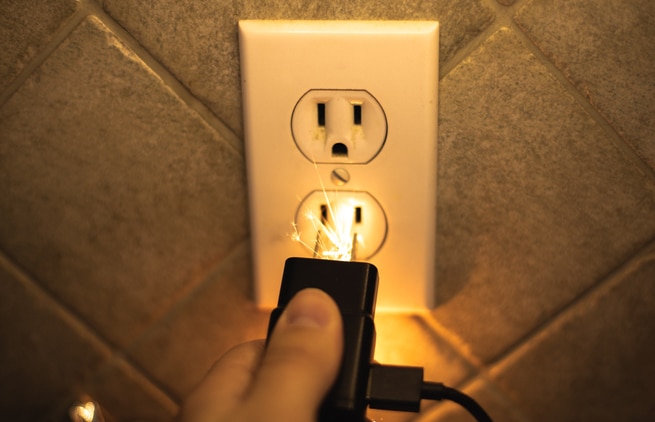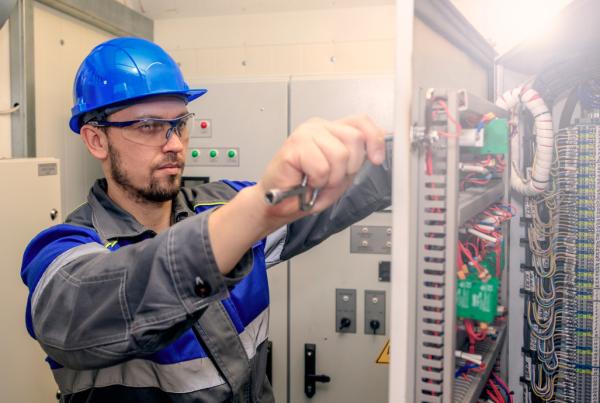When it comes to commercial, industrial, and large-scale residential buildings or complexes, electrical contractors need to be particularly careful about the electrical services and repairs performed. This isn’t just to ensure NEC compliance, but also to ensure customer, resident, and occupant safety.
It is common to experience small blue sparks when you plug something in to an outlet. These blue sparks may seem harmless, but internally, sparking outlets may be a warning sign of potentially dangerous problems for you in the future. Skyline Electric’s electrical contractors have helped numerous companies and skyscrapers analyze problems in their electrical systems solely as a result of these sparks.
So let’s take a closer look at what sparking in outlets may mean and the dangers that they may pose.
Sparking From Outlets – What Does It Mean?
Every electrical system starts from a single point but is then divided into different circuits. Each of these circuits has a circuit breaker on one end and an outlet on the other. This outlet may be connected to your ceiling fan, kitchen range, or socket.
Whenever something is connected to it, the circuit gets completed and the never-ending cycle of electron displacement begins, and the electricity is used. However, there is always a nanosecond when the outlet almost touches the electrical appliance’s plug. The distance could be a centimeter, a millimeter, or even a nanometer.
The electrical current from your circuit always finds the path of least resistance, just like lightning. Until actual contact, this path is the proximity of a conductor. When an electric current passes from one point to another without the two points touching each other, a spark is produced. The concept is similar to lightning strikes but on a much, much smaller scale.
This spark happens almost every single time and is usually considered safe and normal. However, sometimes, these sparks can be very problematic.
The Dangers of Sparking in Outlets
Electrical contractors across the globe agree that in the following four instances, you shouldn’t dismiss sparks as ‘normal’.
- Bright sparks. Also classified as ‘big sparks’, these sparks can be seen even when it is bright outside and can simply be because of moisture. These are usually harmless, but you should consider having them checked out if they persist, and/or investing in a dehumidifier.
- Long sparks. These sparks can be problematic if they linger for an extended period as they can lead to electrical fires.
- White/yellow sparks. Blue sparks are harmless, but yellow or white sparks may indicate a risk of short-circuiting.
- “Smokey” sparks. These are sparks are indicative of an electrical fire and can be very serious. They need to be fixed immediately.
These sparks may be a result of:
- Short circuits
- Moisture
- Overloaded circuits
- Old outlets
- Electrical repair or service in the past
If you are seeing bright blue, yellow, or white sparks from your electrical sockets, you should call experts immediately. Skyline Electric’s electrical contractors can help you diagnose and repair any electrical system you may need help with, no matter how extensive. Call us today to learn more about how we can help!




